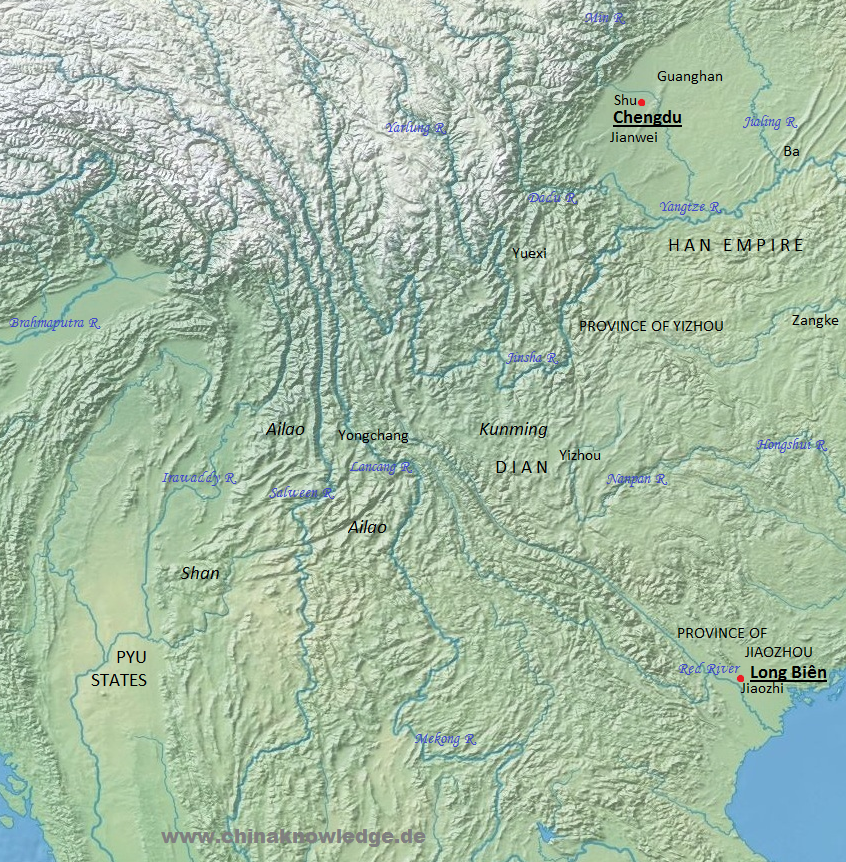Shan 撣 was a country located in the hills of the modern province of Yunnan and the north of the state of Myanmar. If flourished during the Han period 漢 (206 BCE-220 CE) and its people can probably identified as the ancestors of the modern Shan tribes living in Myanmar.
 |
Southwest China and its surroundings between c. 200 BCE and 200 CE. Based on Tan Qixiang 譚其驤, ed. (1995), Zhongguo lishi ditu ji 中國歷史地圖集, Vol. 2, Qin, Xihan, Donghan shiqi 秦西漢東漢時期 (Beijing: Zhongguo ditu chubanshe, 1996). Tribes in italics, commanderies in normal letters. |
In 97 CE the king of the Shan, Yongyoudiao 雍由調 sent an embassy to the Han court to present tributes. Emperor He 漢和帝 (r. 88-105 CE) accepted the tributary gifts of jewels and bestowed the king of the Shan a golden imperial seal, while several chieftains were likewise grantes seals as subordinated officials. The embassy was also given Chinese coins and silks. In 120 a second embassy to the Han court presented musicians and dwarves from Haixi 海西 (said to be from the country of Daqin 大秦, i. e. the Near East, or rather India or Persia). These dwarves were artists able to swallow fire, to make themselves free of fetters, and to juggle with balls. Emperor An 漢安帝 (r. 106-125 CE) enjoyed the artists troops and bestowed upon Yongyoudiao the title of commander-in-chief (duwei 都尉).